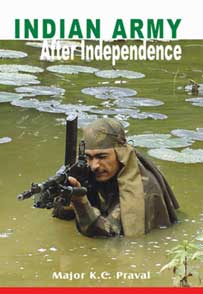To assuage international opinion, the treaty was made ‘provisional’ and subject to renegotiation after the settlement of the dispute over Kashmir between Pakistan and India’. All the same, the treaty gave China physical possession of territory of great strategic value. She got 6,475 square kilo metres of Hunza lying in Kashmir South of Mintaka Pass. In return, Pakistan was given 1,942 square kilometres of grazing land and salt mines in an area that had been under Chinese occupation.12
The treaty altered the geopolitical situation in the region to India’s disadvantage. It gave China increased influence over the strategic Karakoram Pass and in Hunza she acquired a position deep within Kashmir, from which she could exert military pressure over the rest of the state. The ceded territory brought the Chinese close to the Gilgit airfield, an area from which Pakistan had sent columns to Leh via Skardu and towards Srinagar by way of the Gurais Valley, during the 1947–48 operations. The possibility of China exploiting her position in Hunza for similar moves was a matter of serious concern to India.
 The breakdown of negotiations over Kashmir came within weeks of the signing of the Sino-Pak border treaty. The effect of the two events and the turmoil created by the Hazratbal incident brought relations between the two countries to a crisis. Pakistan added to the ill-feeling by mounting a propaganda campaign against India for the measures she was taking to improve her defences.
The breakdown of negotiations over Kashmir came within weeks of the signing of the Sino-Pak border treaty. The effect of the two events and the turmoil created by the Hazratbal incident brought relations between the two countries to a crisis. Pakistan added to the ill-feeling by mounting a propaganda campaign against India for the measures she was taking to improve her defences.
We have till now not made a mention of the effects of the Chinese invasion on Nehru. To the man who had played a major part in India’s struggle for freedom and had led her through thick and thin after Independence, the events of 1962 brought shock and disillusionment.
However, China’s invasion proved his assessment of that country to be wrong and India suffered a reverse in consequence. His sorrow was great. Some of the non-aligned nations which tried to mediate between China and India failed to show a proper understanding of this country’s case. This deepened his sorrow. All the same, he showed his mettle by refusing to negotiate with China under duress. But 1962 left its mark on Nehru. He was never the same man again; his health failed and he died on 27 May 1964.
 In an earlier chapter a parallel was drawn between Ashoka and Nehru. Through his highly moral policy of dharma, Ashoka is accused of having neglected the military and contributing to the downfall of the Great Mauryas. Similarly, the policy of non-alignment and ignoring the requirements of defence brought about the debacle of 1962. Yet, despite these facts, both Ashoka and Nehru are among the greatest figures of Indian history for their incorruptible moral fibre and their cherishing and practising the higher values of life.
In an earlier chapter a parallel was drawn between Ashoka and Nehru. Through his highly moral policy of dharma, Ashoka is accused of having neglected the military and contributing to the downfall of the Great Mauryas. Similarly, the policy of non-alignment and ignoring the requirements of defence brought about the debacle of 1962. Yet, despite these facts, both Ashoka and Nehru are among the greatest figures of Indian history for their incorruptible moral fibre and their cherishing and practising the higher values of life.
Notes
- Figures from Red Coats to Olive Green, by V. Longer, pp. 396–7.
- General Thapar was later appointed India’s ambassador to Afghanistan.
- General J.N. Chaudhuri - An Autobiography, told to Colonel B.K. Narayan, p. 174.
- The Untold Story, by Kaul, p. 445.
- Ibid., p. 446.
- Ibid., p. 448.
- Some of the changes at Army Headquarters did not bring the improvement that was expected. Commenting on these, Lieutenant General l.S. Gill (retd), who was Director of Military Operations during the Indo-Pak conflict of 1971 and was later General Officer Commanding-in-Chief Western Command, had this to say: “The abolition of the appointment of the Chief of the General Staff (CGS) and the creation of the appointments of Vice Chief of the Army Staff (VCOAS) and Deputy Chief of the Army Staff (DCOAS) have had continuing adverse effects on functioning. The intention was to take the load off the COAS but instead it has increased it. Since Operations, Intelligence and Training (and previously Combat Development) are under the VCOAS and the Directorates of Staff Duties and Weapons and Equipment under the DCOAS, the COAS has also to perform the functions of the CGS. I made the Field-Marshal [Manekshaw] and [General] Bewoor understand this, but although they agreed with me they did nothing about it. The Directorate of Combat Development was wound up quite a few years ago. Having taken this idea from the USA we found that we did not know what to do with it”.
- General J.N. Chaudhuri, by Colonel Narayan, p. 178.
- The Hazratbal mosque in Srinagar has a sacred relic of Prophet Mohammad, a hair (bal), which is held in great veneration by the Muslims, and is well-guarded. The riots of December 1963 resulted from the disappearance of the relic under mysterious circumstances. Its subsequent recovery-was as mysterious.
- The Indo-Pakistan Conflict, by Russell Brines, p. 213.
- International relations shift with a change in the interests of nations. A time was to come when the USA would use the good offices of Pakistan for a rapprochement with China.
- The Indo-Pakistan Conflict, by Russell Brines, p. 203.




